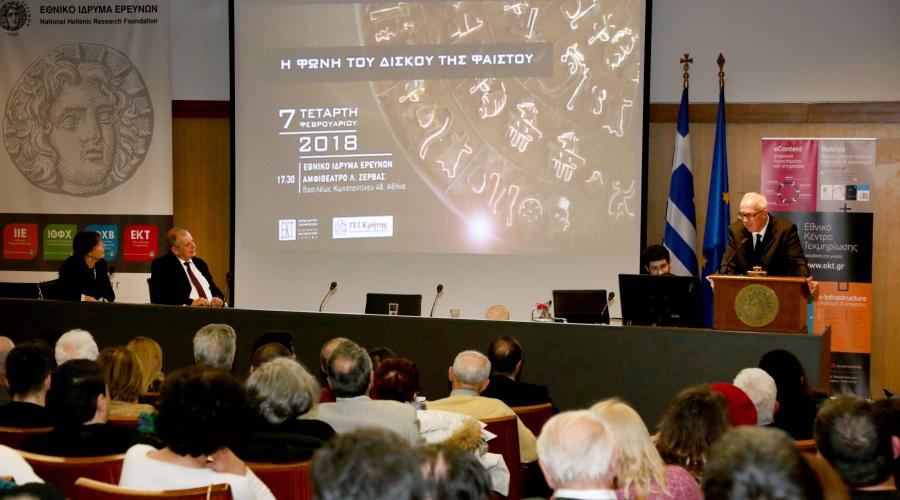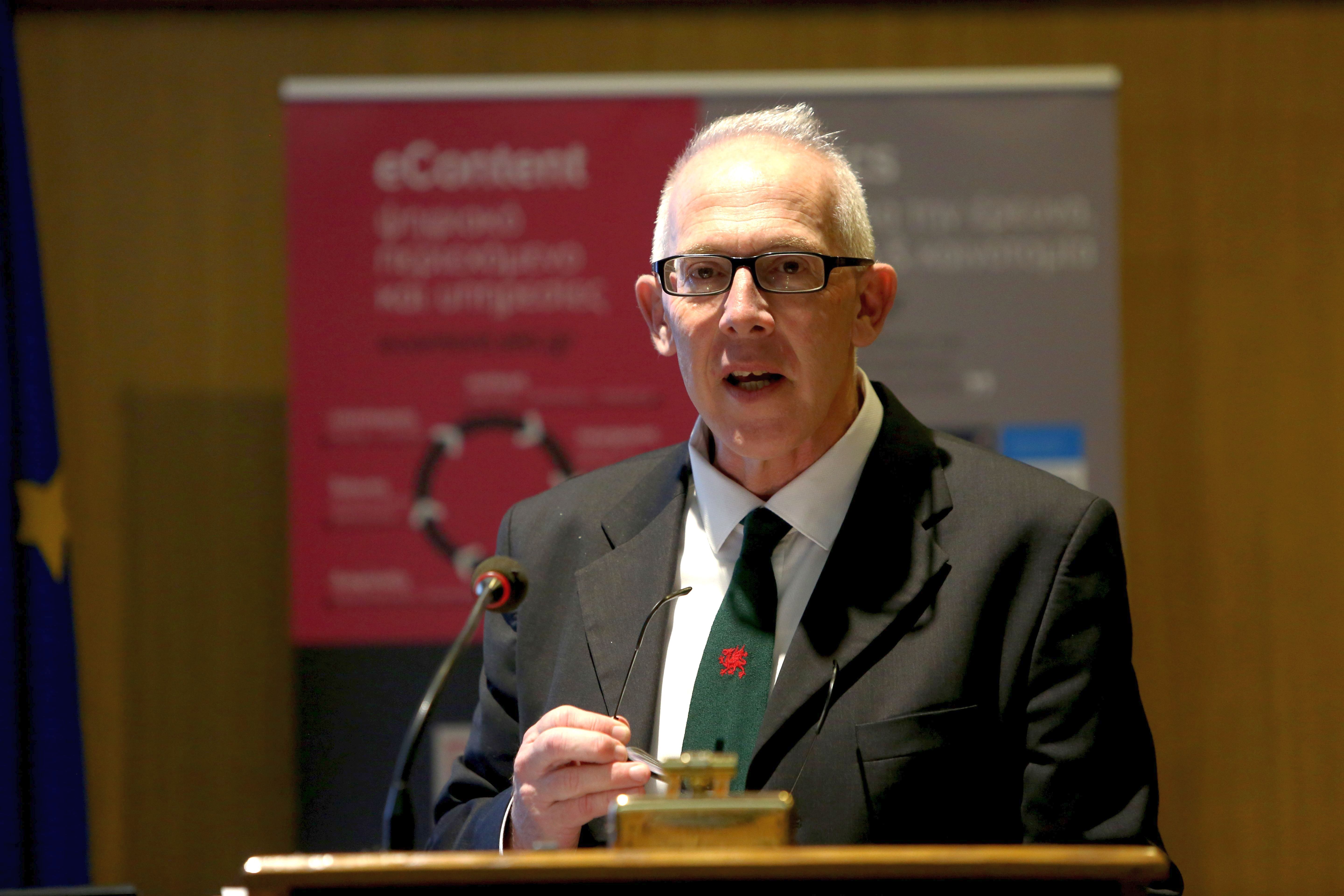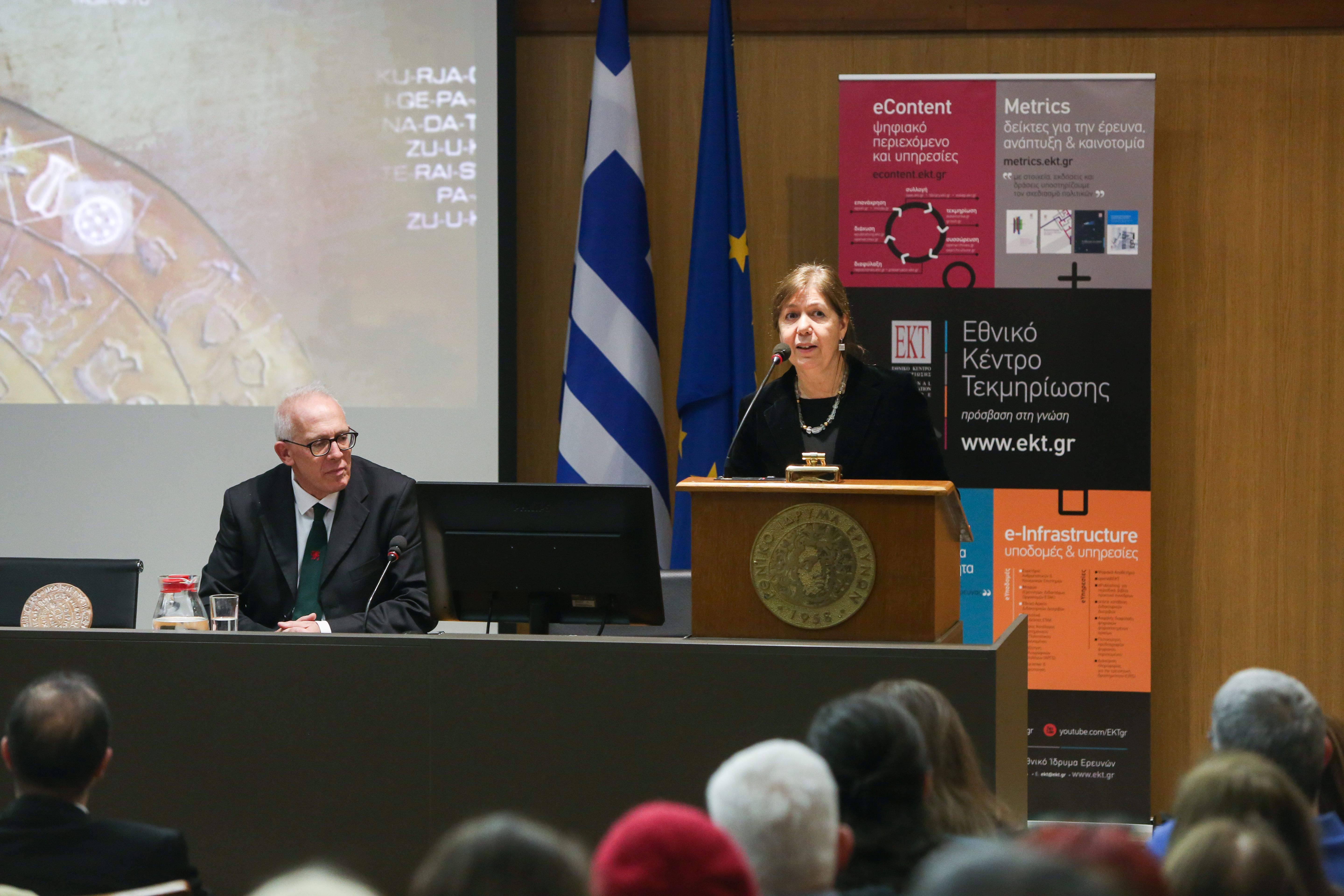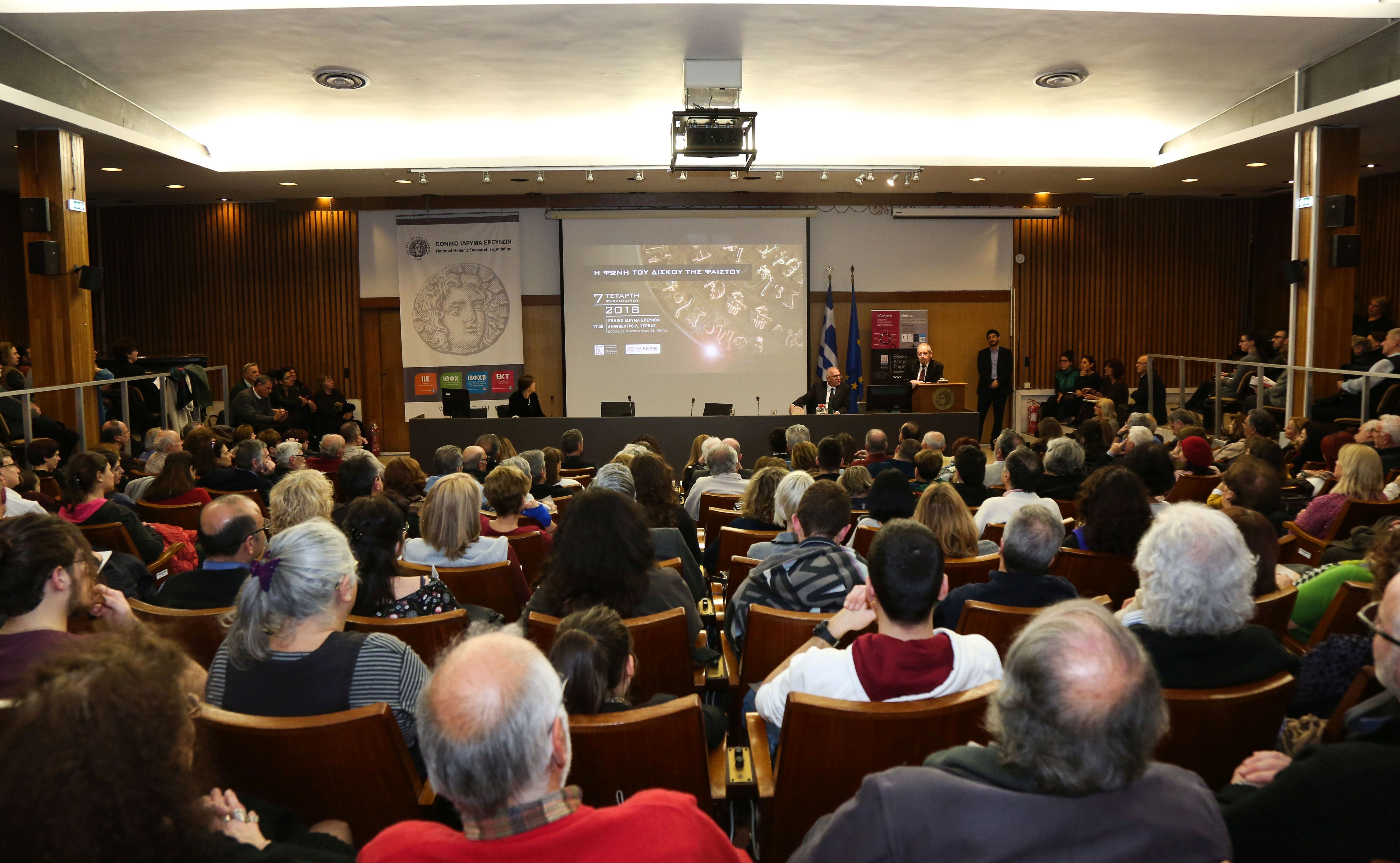
A new approach to interpreting the Phaistos Disc was revealed by Dr. Gareth Owens at an event held by the National Documentation Centre and TEI Crete, on Wednesday 7 February 2018 at the National Hellenic Research Foundation. Speaking in fluent Greek, the Welsh linguist stressed that, based on his many years of research, the one side of the Disc refers to the pregnant goddess that "shines" and the other side refers to the goddess that "sets", probably the Minoan goddess Aphaia

Dr. Gareth Owens, an expert on the minoan scripts who has dedicated more than ten years to studying the Phaistos Disc with John Coleman, Professor of Phonetics, Oxford University, has succeeded in ‘reading’ 99% of the Disc and has interpreted more than 50% of it. Based on the conclusions of the research which were revealed that the Phaistos Disc, the most well-known Minoan syllabic inscription of the Bronze Age, dated to the 17th century BC, 500 years before the Trojan War, is a prayer to the pregnant goddess and the goddess Aphaia.
As Gareth Owens said, "We "read" the Phaistos Disc using the phonetic values of Linear B and with the help of comparative linguistics, that is, we compare it with other related languages from the Indo-European family of languages". He added, "I believe the disc talks about the pregnant goddess on the one side. The new evidence I have added to the interpretation is that on the other side there is a sentence which refers to that goddess who is well-known from Minoan Crete As Aphaia. Aphaia is identified in Minoan Crete with Diktynna, the goddess of childbirth. She was also related to light. It could be a reference to Astarte and/or Aphrodite. I believe that Aphaia, as a goddess of childbirth on the reverse side of the Disc is related to the pregnant goddess mentioned on the first side". In addition, he explained that "certain words and a complete sentence included in the Disc have been found in other Minoan religious syllabic inscriptions and the cave of Arkalochori and Mount Juktos near to Archanes and Knossos. These religious inscriptions were found with offerings, consequently, the Minoan words which were with the Minoan offerings are associated with religion and health".
At the end of his talk, Gareth Owens summed up the results of his research efforts and understanding of the Disc saying, "From the 61 words, we can offer a meaning for more than half. There are 61 words in total on both sides of the Disc and 18 lines like a rhyming sonnet. Six words refer to the light and six to sunset. Three words refer to the pregnant goddess and another 10 to the goddess with different adjectives". Concluding his talk, he addressed the audience directly saying, "With your help, one day in the future, I would like to translate these verses to the goddess of love to learn far more".
The views expressed by Gareth Owens provoked such lively interest from the audience, that there followed a fruitful discussion of the details of the well-known linguist’s research and the scientific substantiation of his conclusions. As the welsh linguist stated, the comments and observations of experts as well as the public contribute to the improvement of the research and the next step as far as interpreting the Phaistos Disc.

The welcoming speech was given by the director of EKT, Dr. Evi Sachini, who stressed the importance of the actions and events which contribute to scientific dialogue and dissemination of scientific knowledge. She also referred to the role of EKT stating, "We act institutionally in organising, documenting and disseminating knowledge produced by the Greek hellenic system. To do that, we select scientific and cultural content and with the help of digital technology have become a hub for the country, aggregating digital cultural content produced by authoritative organisations. At the same time, we act as a facilitator in the communication between scientists and the general public".
A welcome was also given by Yiannis Kaliakatsos, former vice-rector and academic director of the international relations office of the tei Crete. At the end of the event, the audience were treated to a rendering of the "Voice" of the Phaistos Disc by the musician Despina Chiotidou.

Dr Gareth Owens has received a number of awards including the Ventris Award from the Architectural School of London and the Institute of Classical Studies, University College London, where he was a lecturer in Linear B (1991-1992), succeeding Professor James Hooker. He is currently Co-ordinator for the Erasmus+ programme and associate Head of the International Relations Office TEI Crete. In addition, he has been appointed as "ambassador" for Erasmus+ for higher education by the European Union for the period 2014-2020.
The Disc was discovered in 1908 during the Italian excavations at Phaistos and is dated circa 1,700B.C. Today it is being exhibited at the Archaeological Museum in Herakleion. Chronologically, it belongs to the period of Minoan Writing, but differs in many ways from it. The writing on the disc was inscribed in the clay using different stamps and is believed to be the oldest global form, about 2,500 years before the first samples of printed materials. With a diameter of roughly 16 cms, it is inscribed on both sides with a total of 242 tokens, divided into 61 groups. There are 45 distinct signs on the disc, more than necessary for an alphabet but fewer than necessary for a true ideographic script.
Τhe video of the event is avalaible on the website of the event: http://www.ekt.gr/el/events/program/21367







